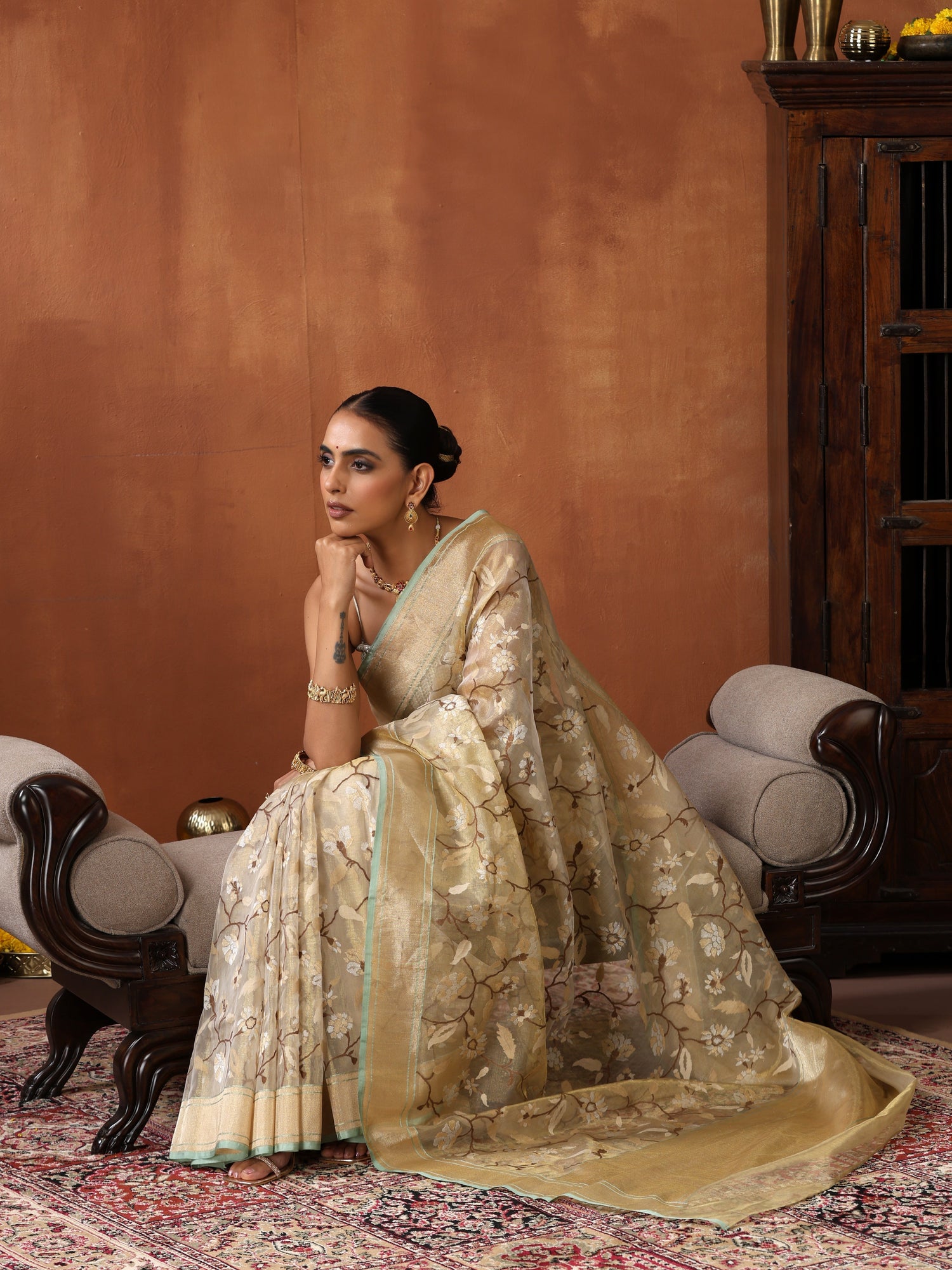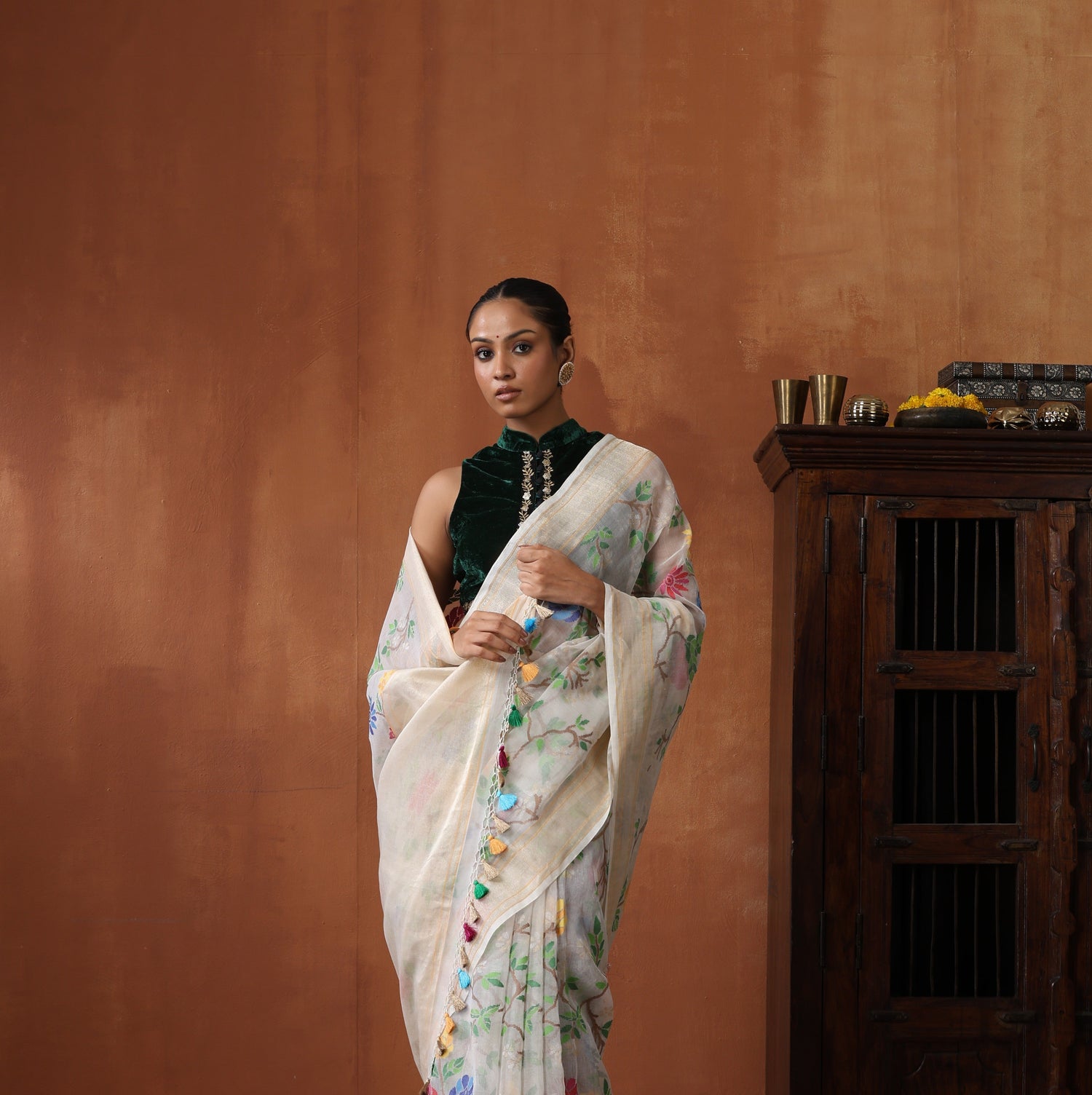Lucknow, Uttar Pradesh's state capital, is known worldwide for its distinctive Chikankari embroidery. Although chikankari work is done worldwide, traditional Lucknow chikankari is distinct because it uses floral patterns and creepers throughout the fabric.

Chikankari is also known as Lucknowi Chikan, Lucknow Chikankari, or Chikan Embroidery. Lucknow has been the centre of manufacturing exquisite Chikan craftsmanship for over 200 years. The collapse of the Mughal court resulted in a significant loss of artisans and industry. Thus, it was afterwards patronised by Nawabs. Most clothing is stitched first and then embroidered, although things such as suit material, skirts, Chikankari saris, and table linen, among others, are embroidered first and then finished. More than 5000 families are involved in the Chikankari embroidery industry, living in and around Lucknow's remote villages.
Chikankari is one-of-a-kind hand embroidery that cannot be reproduced, with its uniqueness going far beyond other embroidery techniques and a vast range of stitching methods.
Origin
Chikankari's origins are enigmatic and mythical. References to Indian Chikan work may be found as early as the third century BC. Megasthenes stated that Indians wore flowered muslins. There are many stories about India's origination of the Chikankari embroidery technique. A traveller going through a hamlet near Lucknow claimed to have stopped and asked a poor farmer for water. Delighted with the peasant's kindness, the traveller taught him the skill of Chikankari, ensuring that he'd never go hungry in life.

Another story concerning Chikankari and the growth of Chikan goes back to Jahangir's Mughal court, whereby his beautiful and skilled queen Nur Jahan was a fan of Chikan embroidery. She charmed the king with its dreamy white needlework, which quickly garnered prominence and imperial patronage.
Types of Chikankari Embroidery
Rahet: A stemmed stitch that is hardly used in its basic form but is frequently utilised in the double version of Dora bakhiya.
Banarasi: A knotted stitch made on the right-hand side of the cloth using six threads. Banarasi Chikankari Sarees are very famous for the same.
Khatau: a type of appliqué that is similar to Bakhia but finer. The design is created on calico, then embroidered into the surface of the finished cloth with paisley and flower designs.
Taipchi: A long-running or darning pattern to highlight a particular theme.
Bahia: or shadow labour, is classified into two types: multi and sidhi.
Phanda: Millet-shaped stitches that create flowers and motifs such as grape vines.
Murri: rice-shaped micro stitching
Jali: Traditionally worked by ripping the threads of the material and forming minute buttonhole stitches.
Keel Kangan: This material is used to embellish floral designs and butties.
Hool: a little detachable eyelet stitch. It is made with six strands and resembles the heart of a flower.
Zanzibar: After one or more outlines have been done, the Zanzeera stitch is used to delineate the leaf/petal forms finally.
The traditional way of manufacturing Lucknawi Chikankari Garments
Chikankari was initially done on fabrics such as Muslin and Mulmul, commonly known as "Tanzeb." Still, due to the expanding fashion industry, it is usually done on silk, nets, georgette, cotton, chiffon etc.
Chikankari is a method and procedure that includes delicate and artistic hand stitching on various textile fibres. Highly detailed work uses basic instruments to adorn stunning motifs on plain or light-coloured fabrics.
- The first stage is fabric cutting and styling, which involves the tailor cutting the cloth into the desired form. After cutting, the tailor sews the garment using a running stitch.
- Depending on the garment's design, several patterns of wood planks are constructed, such as floral, but is, or borders. The material is immersed in a colour solution that combines glue and indigo. This process is also called“Chhapayi”.
- The images are embossed on semi-stitched cloth with dye-dipped pattern blocks. The designer colours the tile and places it on the fabric spread out on the tabletop.
- Artisans embroider over the printed fabric using a needle, thread, and the frame where the cloth is set. Various chikan stitches, such as Bakhiya, Phanda, Keel Kangan, Pechni, and others, are used to construct multiple designs, such as motifs or butis.
- Following the completion of the embroidery, the cloth is soaked in water and washed to eliminate the block imprinted blue colour. The rigidity in chikan products is achieved by starching and pressing the material.
The fabric used for Chikankari Work
What fabric is used to make the evergreen Chikankari saree? Coloured fabric and threads are utilised in addition to the white foundation cloth. Silk and cotton threads are used for embroidered work on drapes, dupattas, table linen, and kurtas. Chikankari is mainly done on cotton, although it may also be done on mulls/malmal, maslins, organzas, and polyester. Chiffon, viscose, georgette, polyester georgette, cotton crepe, and net are a few more. The patterns vary monthly to reflect market trends, with colours that complement the season.

The classic muslin material on which the craft was founded has since given way to lighter textiles like cotton, silk, chiffon, organza, and net. The goal is to choose a lightweight fabric that not only facilitates the embroidery process much more accessible (the needle can glide through without much resistance) but also helps the work stand out on its own.
The art may be found in various men's and women's clothing. Everything from a long kurta to a saree, Anarkali, palazzos, and even a variety of accessories and home décor goods such as mood lighting, cushion and table coverings, and bed wraps is available.
How to distinguish between actual needlework and machine work & Chikankari
The sewing cycle is the primary distinction between hand and machine Chikankari embroidery. Hand embroidery takes into account various lines, threads, and textures. Each creation is intriguing to the weaver who created it. Machine weaving is relatively consistent, and each piece is typically indistinguishable if various objects are stitched together.
Work samples are put into PC software that regulates the weaving machine's stitching for the device. All designs have similar lines, and each Lucknow chikankari product looks identical. The stitcher's ardour for exquisite art remains constant.
The distinctiveness of hand embroidery stems from the kind of threads used. Cotton or silk threads are commonly used. These threads have excellent precision and gloss, contributing to the excellent concealment possible with particular Hand Embroidery lines. Because of the varying thicknesses of the strings, more detail may be achieved. Hand Embroidery is also a token. It has "genuine worth" since it is time-consuming and takes craftsmanship and imagination.
Hand weaving and machine weaving are two distinct stitching processes, each with its reason. It depends on your final goal of producing amazing Lucknow chikan work outfits.

A handwoven Lucknow chikankari work is more distinctive, making it an excellent way to create a one-of-a-kind treasure or a source of pride for the embroiderer. The cycle necessitates time and heart contemplation to add the intricacies that will allow the weaving to stand out. On the other hand, machine weaving produces more clever glancing work in a fraction of the time it takes to achieve something comparable by hand.
Conclusion
Lucknowi Chikankari has acquired a position in men's Kurtas, particularly bridal gowns and women's materials. Lucknowi chikankari fabric stands out from the crowd of textiles on the market, capturing everyone's attention. Though Chikankari embroidery is available in various fabrics, don't overlook the classic piece on cotton since cotton is excellent and elegant, and this embroidered cotton is wealthy as well.
Check out our exclusively curated collection of Chikankari Sarees!





